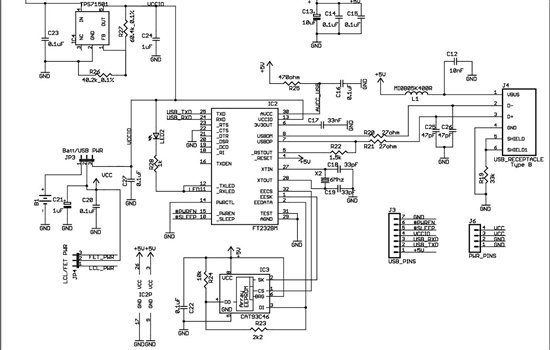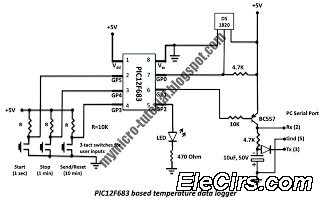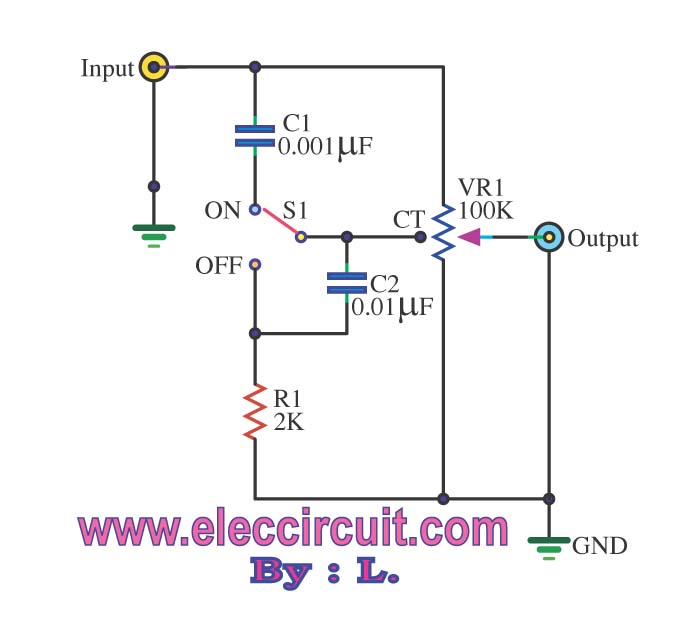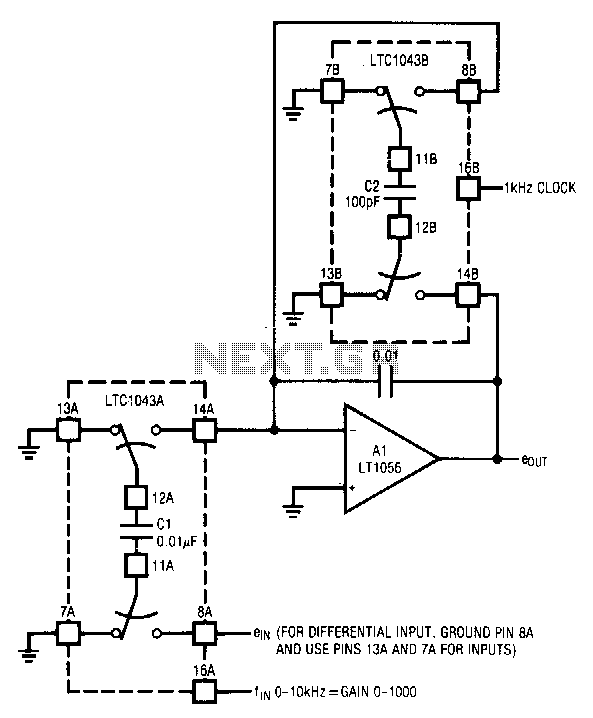
off infrared remote control schematic
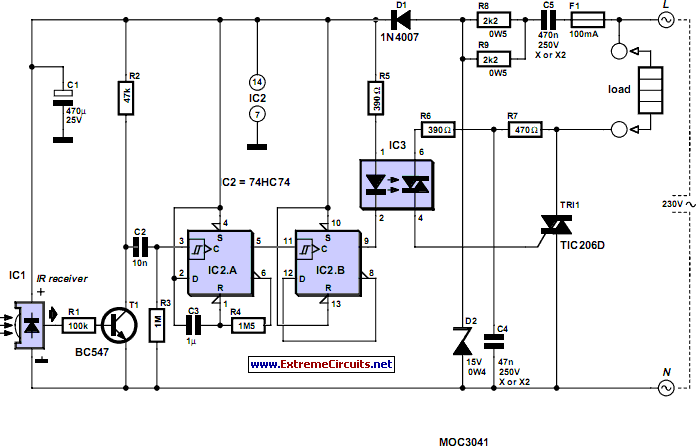
According to the note on the schematic, IC-2 is a 74HC74 TTL chip. Refer to the data sheet for details regarding pins 7 and 14. The note for IC-3, located lower on the schematic, indicates it is an AC optocoupler with the part number MOC3041. D2 is specified as a 15-volt, 4-watt zener diode, with the part number 1N5352 being a suitable replacement.
The 74HC74 is a dual D-type flip-flop that operates with a supply voltage range of 2V to 6V, making it versatile for various digital logic applications. Pins 7 and 14 are critical as they correspond to the ground and Vcc (supply voltage) connections, respectively. The flip-flop can be used in applications such as data storage, frequency division, and pulse generation. The output state of the flip-flops changes on the rising edge of the clock input, allowing for synchronous operation.
The MOC3041 is an optocoupler designed for AC applications, featuring a phototransistor output that is isolated from the input side. This component is beneficial for interfacing between high-voltage AC circuits and low-voltage control circuits, providing safety and signal integrity. The internal LED of the MOC3041 is activated by the AC input, which in turn triggers the phototransistor to conduct, allowing for signal transfer without direct electrical connection.
The specified zener diode, 1N5352, is a 15V, 4W device that serves to regulate voltage in the circuit. It maintains a stable output voltage by allowing current to flow in the reverse direction when the voltage exceeds its breakdown voltage. This characteristic makes it suitable for protecting sensitive components from voltage spikes and ensuring stable operation within the specified voltage range.
In conclusion, the combination of the 74HC74 flip-flop, MOC3041 optocoupler, and the 1N5352 zener diode provides a robust solution for digital logic applications, AC signal isolation, and voltage regulation, respectively. Each component plays a crucial role in ensuring the reliability and functionality of the overall circuit design.As per the note on the schematic IC-2 is a 74HC74 TTL chip, look up the data sheet and it will show you what pins 7 and 14 are. The note for IC-3 is down lower its an AC optocoupler part number MOC3041. D2 is noted as a 15volt. 4 watt zener diode, a part number 1N5352 will work. 🔗 External reference
The 74HC74 is a dual D-type flip-flop that operates with a supply voltage range of 2V to 6V, making it versatile for various digital logic applications. Pins 7 and 14 are critical as they correspond to the ground and Vcc (supply voltage) connections, respectively. The flip-flop can be used in applications such as data storage, frequency division, and pulse generation. The output state of the flip-flops changes on the rising edge of the clock input, allowing for synchronous operation.
The MOC3041 is an optocoupler designed for AC applications, featuring a phototransistor output that is isolated from the input side. This component is beneficial for interfacing between high-voltage AC circuits and low-voltage control circuits, providing safety and signal integrity. The internal LED of the MOC3041 is activated by the AC input, which in turn triggers the phototransistor to conduct, allowing for signal transfer without direct electrical connection.
The specified zener diode, 1N5352, is a 15V, 4W device that serves to regulate voltage in the circuit. It maintains a stable output voltage by allowing current to flow in the reverse direction when the voltage exceeds its breakdown voltage. This characteristic makes it suitable for protecting sensitive components from voltage spikes and ensuring stable operation within the specified voltage range.
In conclusion, the combination of the 74HC74 flip-flop, MOC3041 optocoupler, and the 1N5352 zener diode provides a robust solution for digital logic applications, AC signal isolation, and voltage regulation, respectively. Each component plays a crucial role in ensuring the reliability and functionality of the overall circuit design.As per the note on the schematic IC-2 is a 74HC74 TTL chip, look up the data sheet and it will show you what pins 7 and 14 are. The note for IC-3 is down lower its an AC optocoupler part number MOC3041. D2 is noted as a 15volt. 4 watt zener diode, a part number 1N5352 will work. 🔗 External reference
